The National Museum of World War II Aviation in Colorado Springs had been open less than a year and was only partially done. Their schedule of completion is simply based on money (mostly donations). We got a 1 1/2 tour with Gene, one of the docents. He took us through the various exhibits, sharing various stories and explaining the strategic aerial history of World War II. Absolutely wonderful!

The exhibits

Along with a detailed explanation for the start and progression of the war, Gene explained the differences between the European and Pacific wars. A slideshow help visualize his points. For example, it is only 500 miles between London and Berlin. The battle was mostly an overland war covering a relatively small area. In the Pacific, however, pilots had to deal with huge distances. Hence places such as Pearl Harbor and Midway were vital (it was 1,300 miles between just them). It was much more of an air and navy war.
Some interesting (and some scary) facts:
- A pilot earned the title of 'ace' after he shot down 5 planes.
- The odds of surviving 25 missions were 1 in 5.
- WWI battleships were now too slow; aircraft carries and submarines were far superior.
- The U.S. lost 50,000 people in air wars.
- 100,000 planes were made in 1933. The factory outside of Detroit was one mile long and could produce one B24 bomber every 55 minutes.
- The Japanese had to put wooden fins on their torpedos for Pearl Harbor because the water was too shallow (only 45 feet) and most torpedoes dropped to 70 feet or so before heading back up to the target.

Sharing facts and stories
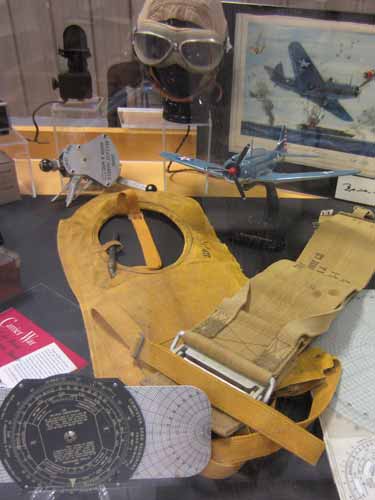

The Flying Tigers (or the 1st American Volunteer Group / AVG) was comprised of pilots from the US Army Air Corps, Navy and Marine Corps. Its mission was to defend China against Japanese forces. This group of volunteers (organized by Claire L. Chennault, a retired US Army Air Corps officer who had worked in China since 1937) were officially members of the Chinese Air Force and earned about three times what they had been making in the US forces. When the news was filled with constant stories of defeat by Japanese forces, the Tigers gave hope to victory by destroying 296 enemy aircraft while losing only 14 pilots in combat.


The Purple Heart (left) is a US military decoration awarded in the name of the President to those wounded or killed while serving in the military. Started in 1917, it is the oldest military award still given to US military members.The Distinguished Flying Cross (right) is a military decoration awarded to any member of the US Armed Forces who distinguishes him/herself through "heroism or extraordinary achievement while participating in an aerial flight". The medal was first awarded in 1927.

WWII really changed society. Everyone joined in, making changes and sacrifices that would help win the war. Items became rationed to the extreme. For example, if you could show no valid reason for having to drive, then you simply got no gas rations or tires.



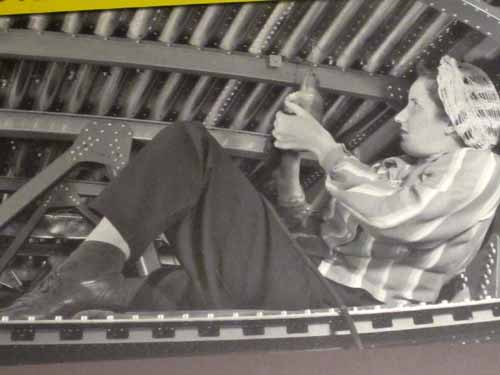
It was also a time of great social change.

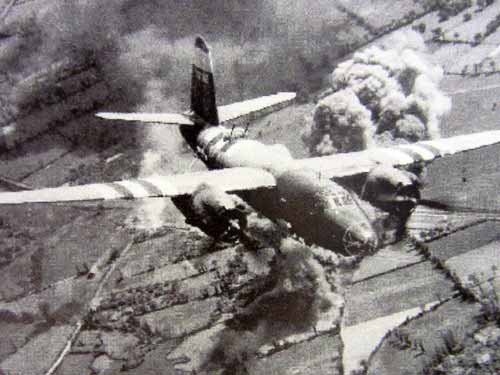

The tour then continued to a large room filled with several refurbished planes.

The Fairchild PT-19 Cornell was a training plane. The wings are mostly of wood, with a canvas-covered steel skeleton. It was brightly colored for visibility.

The TBM Avenger was a torpedo bomber, which required it to fly low and straight. It was the largest aircraft to be operated from aircraft carriers during the war (its wings folded so that it could fit). It could carry a single torpedo or four 500-lb bombs and was operated by a crew of three.

Remains of a Republic P-47D - 2RE Thunderbolt. At the end of the war, there were hundreds of combat aircraft strewn far and wide. Considered invaluable, they were stripped of their engines and bulldozed unceremoniously into pits. Over 50 years later some of them were excavated from Papua New Guinea. It costs between $1 to $5 million to restore a plane.

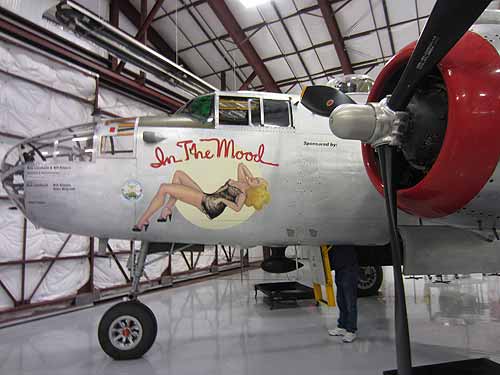
The B52 had to carry a lot of guns (including tank guns) as well as bombs (which it could skip across the water like a stone). Its purpose was to prevent food and supplies from reaching the islands they didn't need to take back from the Japanese and could simply starve out.




N3N-3 Navy pilot training plane. It was nicknamed the "yellow peril" because it was usually flown by inexperience pilots. Normally it was covered with material, but the museum is leaving it like this so they can show kids how the internal controls of an airplane works (the direct links between the petals and the wings or tail).

The self-sealing gas tank was invented around 1942. Since it didn't catch fire, it became a huge advantage.
The next room was where several pieces were currently being restored.
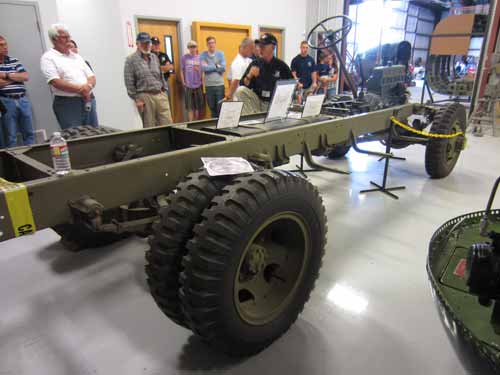
A crash truck

A ball turret from a Navy patrol bomber. There was not a lot of room inside!
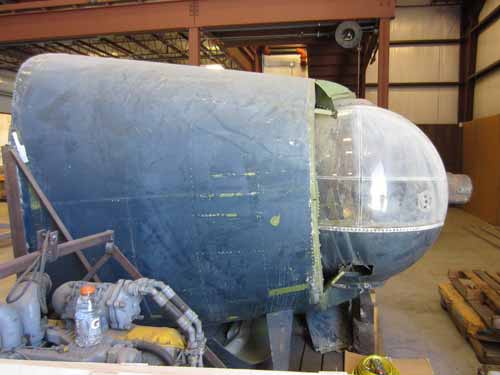
We walked outside to another hangar. This was filled with planes in different states of restoration. But since these were all privately owned, either by collectors or plane enthusiasts, we couldn't take pictures of them.

There was a dark blue F7F Tigercat almost fully completed. This was a very fast two-engine fighter. Ironically it was never actually used in the war because it came out too late. Some were later used in Korea, but by then we had started using jets and not propellor planes.
The P47B was such an effective plane (it could destroy German armor, flew below 10,000 feet, and carried machine guns, rockets and bombs) that the Germans were limited to moving only at night. It had "invasion stripes" (blank and white stripes under wing) so that our own gunners wouldn't accidentally shoot them down. For D-day, 10,000 planes were painted with these stripes 3 days before war. The men used push brooms to get it done that quickly.
In the back room were giant press machines. In the old days, the planes had mass produced parts. Nowadays, to restore them, one either has to find an old part or press out a new one using old drawings.
There were many parts of assorted planes. Some were so twisted and distorted, it looked like a giant had stepped on it. A plane has to have 30% of its original parts so it can considered being 'restored' instead of 'remanufactured.'
There was also a propellor shop. Specs must be within 1/1000 of an inch and the weight distribution must be absolutely perfect. This means that even the paint job must be perfectly balanced.
We returned to the original building and were allowed to walk around as long as we wished. We started talking with another docent who snuck us into one of the back rooms that was packed with parts and planes waiting to be refurbished. Given enough financial support, this place could be really impressive.

